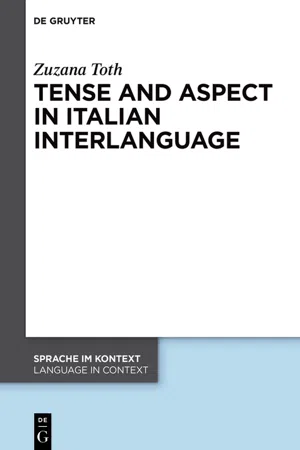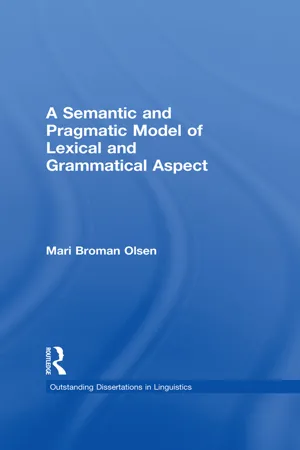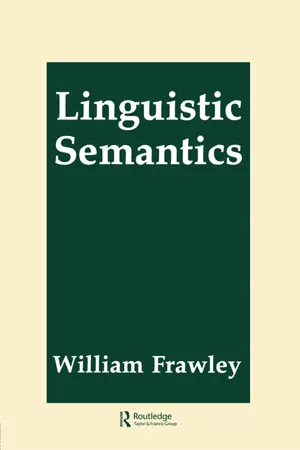Languages & Linguistics
Tense Consistency
Tense consistency refers to maintaining the same grammatical tense throughout a piece of writing or speech. It ensures that the timeline of events remains clear and coherent for the reader or listener. Inconsistent use of tenses can lead to confusion and disrupt the flow of communication.
Written by Perlego with AI-assistance
Related key terms
Related key terms
1 of 4
Related key terms
1 of 3
3 Key excerpts on "Tense Consistency"
- eBook - ePub
- Zuzana Toth(Author)
- 2020(Publication Date)
- De Gruyter(Publisher)
3 Tense, aspect and grounding“The experience of time is fundamental to human cognition and action. Therefore, all languages we know of have developed a rich repertoire of means to encode time” (Klein 2009b : 39). One of the linguistic means for encoding temporal relations in Romance languages is verbal morphology, characterised by formal richness and complexity of form-meaning relations. For instance, Italian simple verb forms merge the categories tense, aspect and mood into a single morpheme, followed by a morpheme expressing person and number. The structure of a simple verb form can be delineated as in (1), where TV stands for a semantically empty thematic vowel followed by the two groups of features (Di Biase 2007 : 39):As pointed out by Di Biase (2007: 39), it is impossible to tease out tense from aspect and mood; or person from number, since both groups of features are merged into a single marker.(1) STEM + TV + (T/A/M) + P/N The relationship between form and meaning is equally complex in the compound verb forms, which contain an auxiliary verb carrying both groups of features (T/A/M and P/ N), and a past participle which bears the lexical information (Andorno 2003 : 72).The present study focuses on the expression of temporal relations conveyed by tense and aspect within the indicative paradigm, without taking into account the complex domain of mood and modality1 . Both tense and aspect convey temporal relations, although in a different manner. Tense is a deictic category, which refers to the location of a situation2 on the time axis with respect to the deictic centre of the discourse, referred to as moment of speech, because it coincides with the moment when an utterance is produced (Reichenbach 1947 - Mari B. Olsen(Author)
- 2016(Publication Date)
- Routledge(Publisher)
(5) a situation posterior to it.(3) I lived in an apartment in Puerto Rico.(4) I live in a house in Maryland.(5) I will live overseas someday.Aspect is NON-DEICTIC: it “is not concerned with relating the time of the situation to any other time-point, but rather with the internal temporal constituency of the one situation” (Comrie 1976:5; cf. Smith 1991:135). It represents how an event takes place over time, without linking it to a specific time. Thus, the Russian sentences in (6) and (7) both refer to the same past event: Tolstoy’s writing of War and Peace . However they differ in terms of “a temporal perspective which focuses all or part of the situation” (Smith 1991:xv). According to Smith (1991), the verb form in (6) presents the writing as IMPERFECTIVE, that is, as (roughly) ongoing in the past. The verb in (7) , with a PERFECTIVE prefix, presents the writing as (roughly) complete in the past (examples based on Smith 1991:306, 301).(6) Lev Tolstoj pisa-l Vojnu i mir.Lev Tolstoy write-PAST War and Peace‘Lev Tolstoy was writing War and Peace.’(7) Lev Tolstoj na-pisa-1 Vojnu i mir.Lev Tolstoy PFV-write-PAST War and Peace‘Lev Tolstoy wrote War and Peace.’Thus, tense and aspect are concerned with time from complementary perspectives. Tense indicates whether situations are located at a reference time, which may be anterior to, contemporaneous with, or posterior to a deictic center. Selection of past, present, or future tense therefore depends on where the reference time of the situation is located with respect to this center. Aspect looks at the internal time of situations, independent of where the situation is temporally located. Selection of imperfective or perfective aspect depends on whether the speaker chooses to present the situation as ongoing or as completed. The distinction between tense as deictic and aspect as non-deictic is adopted by many researchers (Heger 1963 (cited in Gross 1974:25); Anderson 1973:39–40; Thelin 1978:14; Freed 1979; Johnson 1981:152–3; Abusch 1985:1; Chung and Timberlake 1985; Tenny 1987; Smith 1991, Verkuyl 1993). Others equate the distinction with objectivity vs. subjectivity: tense is characterized as objective time and aspect as a subjective presentation thereof (Gross 1974:19; Thurgood 1990:302, fn. 3; Porter 1989:88).- eBook - ePub
- William Frawley(Author)
- 2013(Publication Date)
- Routledge(Publisher)
88.1. INTRODUCTIONTense and Time
In this chapter, we inquire into how language structures and encodes time. The analysis of linguistic time has an involved history, with logical and structural/typological camps (Comrie 1985; Dahl 1985; Prior 1967; Reichenbach 1947; Rescher and Urquhart 1971). In our own foray into the matter, we try to extract the accepted findings from both practices in an attempt to present the necessary elements of any linguistic system of time.We restrict our study of time to the mechanism that assigns time to events: tense. This focus on tense affords us a number of advantages. Most immediately, it allows us to contrast the internal temporal contour of events with their nontemporal internal contour, aspect, discussed at length in the previous chapter.If aspect is the way that an event patterns within or over a time frame, tense is the way an event is explicitly indexed for a time frame, the grammatical and morphological means that a language uses to locate an event in time. Aspect encodes the nondeictic contour of events; tense signals the deictic contour insofar as such concepts as ‘location in time’ and ‘relative order’ are deictic because they require reference points for their determination. We thus get considerable use out of our previous discussion of deixis now that we are required to apply it to the structure of events and their temporal location.Our investigation proceeds as follows. First, we spell out the basics of time and its encoding in any language. Here, we discuss the canonical model of time that underlies linguistic expressions and the elemental deictic requirements of any tense system. Thereafter, we see how the deictic structure of tense translates into linguistic form. The deictic reference point and located point relate to how languages assign absolute and relative values. Remoteness between the reference point and the located point determine the ways that languages choose to measure temporal distance, either through simple extension, as a vectorial system, or through intervals, as a metrical system.
Index pages curate the most relevant extracts from our library of academic textbooks. They’ve been created using an in-house natural language model (NLM), each adding context and meaning to key research topics.
Explore more topic indexes
Explore more topic indexes
1 of 6
Explore more topic indexes
1 of 4


